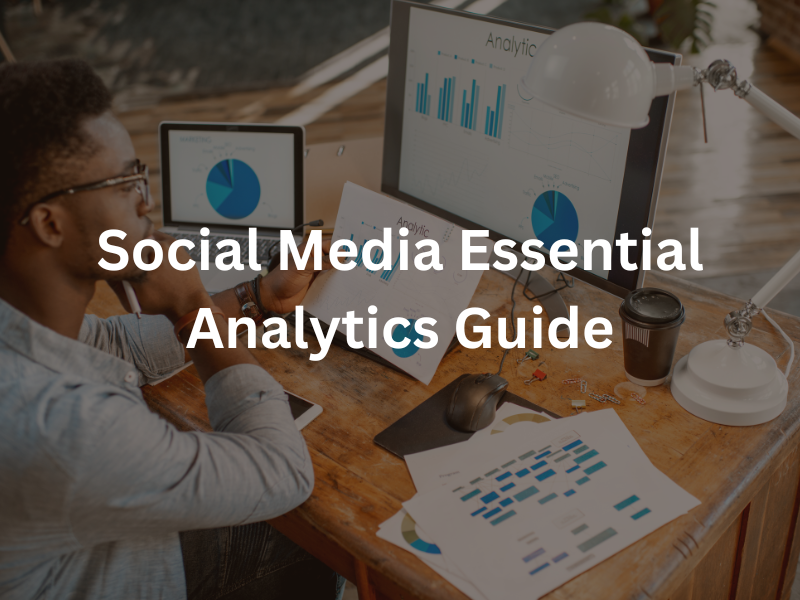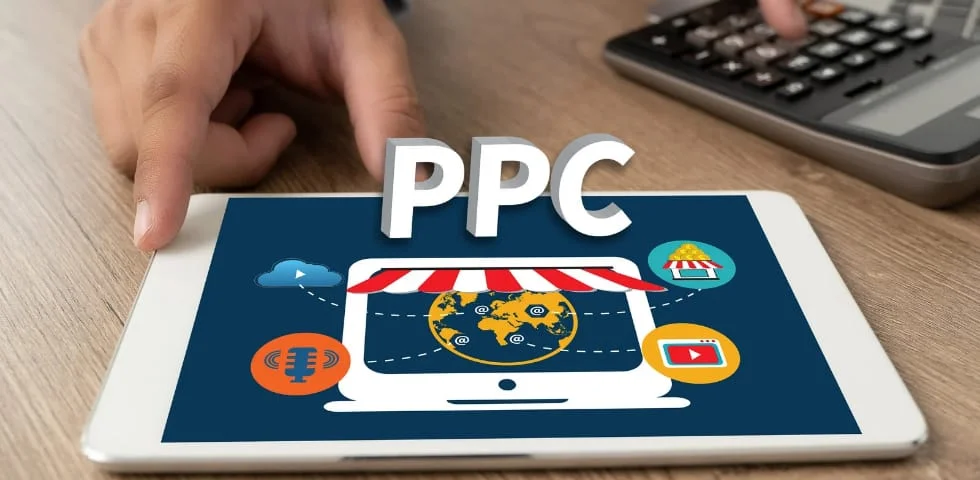Introduction
In today’s digital age, social media marketing is no longer an optional strategy for businesses but a fundamental component of a comprehensive marketing plan. Social media platforms have revolutionized the way brands interact with their customers, providing unprecedented opportunities for promotion and engagement. From small startups to global enterprises, leveraging these platforms can significantly enhance brand visibility and foster deeper connections with audiences.
Imagine reaching millions of potential customers with just a few clicks, creating a vibrant community around your brand, and driving meaningful conversations that lead to increased loyalty and sales. This is the power of social media marketing. However, with great power comes great responsibility. Navigating the dynamic landscape of social media requires a well-thought-out strategy, creative content, and an understanding of each platform’s unique features.
In this comprehensive guide, we will explore how to effectively use social media platforms to promote your products or services and engage with your audience. We will dive into the nuances of different platforms, share proven strategies for engagement, and provide practical tips for measuring success. Whether you are a seasoned marketer or just starting, this guide will equip you with the knowledge and tools to elevate your social media marketing game.
Understanding Social Media Platforms

Navigating the vast array of social media platforms can be daunting, but understanding the unique features and demographics of each platform is crucial for crafting effective social media marketing strategies. Here’s a closer look at some of the most popular platforms and how they can be leveraged to promote your products or services and engage with your audience.

Overview:
Facebook remains a dominant force in the social media landscape, boasting over 2.8 billion monthly active users. It’s a versatile platform suitable for a wide range of content, including text posts, images, videos, and live streams.
User Demographics:
- Age: Broad age range, predominantly 25-34 years old
- Gender: Fairly balanced between male and female users
- Location: Global reach, with strong user bases in the US, India, and Brazil
Key Features:
- Pages and Groups: Create business pages to showcase your brand and join or create groups to foster community engagement.
- Advertising: Robust ad platform with precise targeting options.
- Facebook Live: Engage with your audience in real-time through live videos.
- Marketplace: Sell products directly to users.

Overview:
Instagram, a visual-centric platform, is ideal for brands looking to showcase their products through high-quality images and videos. With over 1 billion monthly active users, it’s particularly popular among younger demographics.
User Demographics:
- Age: Primarily 18-34 years old
- Gender: Slightly more female users
- Location: High usage in the US, India, and Brazil
Key Features:
- Stories: Share ephemeral content to engage users daily.
- IGTV: Post long-form videos for in-depth content.
- Reels: Create short, engaging video clips.
- Shopping: Enable shopping features to sell products directly through posts and stories.

Overview:
Twitter is known for its real-time updates and is an excellent platform for brands to engage in conversations and share timely information. It has around 330 million monthly active users.
User Demographics:
- Age: Predominantly 18-49 years old
- Gender: More male users
- Location: Strong presence in the US, Japan, and India
Key Features:
- Tweets: Share concise updates, links, and media.
- Hashtags: Use hashtags to increase the visibility of your content.
- Twitter Chats: Participate in or host chats to engage with your audience.
- Ads: Promote tweets to reach a larger audience.

Overview:
LinkedIn is the go-to platform for B2B marketing, with over 740 million members. It’s designed for professional networking and is ideal for sharing industry insights, company updates, and job opportunities.
User Demographics:
- Age: Primarily 25-34 years old
- Gender: More male users
- Location: High usage in the US, India, and China
Key Features:
- Company Pages: Create a company page to share updates and engage with followers.
- LinkedIn Articles: Publish long-form content to establish thought leadership.
- LinkedIn Ads: Target professionals based on job title, industry, and more.
- Groups: Join or create groups to connect with industry peers.
TikTok

Overview:
TikTok is a rapidly growing platform known for its short, engaging videos. With over 1 billion monthly active users, it’s particularly popular among younger audiences and is excellent for viral marketing.
User Demographics:
- Age: Primarily 16-24 years old
- Gender: More female users
- Location: Strong user base in the US, India, and China
Key Features:
- Short Videos: Create and share 15-60 second videos.
- Trends and Challenges: Participate in viral trends and challenges to increase visibility.
- Ads: Utilize TikTok’s ad platform to reach a broader audience.
- Influencer Partnerships: Collaborate with influencers to boost brand awareness.
Creating a Social Media Strategy
A well-crafted social media strategy is the backbone of successful social media marketing. It ensures that your efforts are aligned with your business goals and resonate with your target audience. Here’s how to create an effective social media strategy:
Setting Clear Goals and Objectives
The first step in creating a social media strategy is to define clear goals and objectives. What do you want to achieve with your social media marketing efforts? Your goals should be specific, measurable, achievable, relevant, and time-bound (SMART). Common social media goals include:
- Increasing Brand Awareness: Boost your brand’s visibility and reach a broader audience.
- Driving Traffic: Direct more traffic to your website or specific landing pages.
- Generating Leads: Capture new leads through social media campaigns.
- Boosting Engagement: Increase likes, comments, shares, and overall interaction with your content.
- Growing Sales: Drive sales through social media promotions and advertisements.
- Building a Community: Foster a loyal community around your brand.
Identifying Your Target Audience
Understanding your target audience is crucial for creating content that resonates. Analyze your existing customer base and social media followers to identify key demographics, interests, and behaviors. Create detailed buyer personas that include:
- Demographics: Age, gender, location, education, occupation
- Psychographics: Interests, values, lifestyle, challenges
- Behavioral Data: Purchasing habits, social media usage, engagement patterns
This information will guide your content creation and help you choose the right platforms and messages to reach your audience effectively.
Content Planning and Scheduling

Content is the heart of social media marketing. A strategic content plan ensures that your posts are consistent, relevant, and engaging. Here’s how to create one:
- Content Themes: Identify key themes that align with your brand and audience interests. For example, a fitness brand might focus on workout tips, nutrition advice, and success stories.
- Content Types: Use a mix of content types to keep your audience engaged, including images, videos, infographics, blogs, and user-generated content.
- Content Calendar: Develop a content calendar to plan and schedule your posts. This helps maintain consistency and ensures you post at optimal times for maximum engagement.
- Repurposing Content: Maximize the value of your content by repurposing it across different formats and platforms. For example, a blog post can be turned into an infographic, a video, and several social media posts.
Engagement Tactics
Engagement is a two-way street. It’s not just about broadcasting your message but also about listening and interacting with your audience. Here are some effective engagement tactics:
- Creating Engaging Content: Focus on high-quality, relevant content that sparks conversation. Use questions, polls, and interactive elements to encourage participation.
- Using Interactive Features: Leverage platform-specific features like Instagram Stories, Facebook Live, and Twitter polls to create interactive experiences.
- Responding to Comments and Messages: Promptly respond to comments and messages to show that you value your audience’s input and are willing to engage in dialogue.
- Building a Community: Foster a sense of community by acknowledging and rewarding loyal followers, encouraging user-generated content, and creating exclusive groups or forums.
Promotional Techniques
Promotion is a critical aspect of social media marketing, allowing you to reach new audiences and drive action. Here are several techniques to effectively promote your products or services on social media platforms:

Paid Advertising Options
Each social media platform offers unique advertising opportunities to help you reach your target audience more effectively. Here’s a breakdown of the main options:
- Facebook Ads: Utilize Facebook’s advanced targeting options to reach specific demographics, interests, and behaviors. Ad formats include image ads, video ads, carousel ads, and sponsored posts.
- Instagram Ads: Leverage visually appealing ads in the form of photo ads, video ads, carousel ads, and Stories ads to engage Instagram’s highly interactive user base.
- Twitter Ads: Use promoted tweets, promoted accounts, and promoted trends to increase visibility and engagement.
- LinkedIn Ads: Target professionals with sponsored content, sponsored InMail, and text ads based on job title, industry, and other professional criteria.
- TikTok Ads: Create short, engaging video ads that appear in users’ feeds or as sponsored hashtag challenges to tap into TikTok’s viral nature.
Influencer Collaborations
Partnering with influencers can significantly amplify your reach and credibility. Influencers have established trust with their followers, and their endorsements can drive engagement and sales. Here’s how to effectively collaborate with influencers:
- Identify Relevant Influencers: Look for influencers whose audience aligns with your target market. Use tools like BuzzSumo, HypeAuditor, or Influencity to find potential partners.
- Set Clear Objectives: Define what you want to achieve through the collaboration, whether it’s brand awareness, lead generation, or sales.
- Develop Authentic Campaigns: Work with influencers to create authentic content that resonates with their followers. Avoid overly scripted content to maintain credibility.
- Measure Results: Track the performance of your influencer campaigns using metrics like engagement rate, reach, and conversions.
Measuring Success
To ensure your social media marketing efforts are effective, it’s crucial to measure success and analyze performance. This allows you to understand what works, what doesn’t, and how you can improve your strategies. Here’s how to measure success on social media:

Key Performance Indicators (KPIs)
Identifying and tracking the right KPIs is essential for evaluating the success of your social media campaigns. Some important KPIs include:
- Reach: The number of unique users who have seen your content. This helps you understand the size of your audience.
- Engagement: The total interactions (likes, comments, shares) your content receives. Higher engagement indicates that your content resonates with your audience.
- Conversion Rate: The percentage of users who take a desired action, such as making a purchase or signing up for a newsletter, after interacting with your content.
- Click-Through Rate (CTR): The percentage of users who click on a link in your post. This is a good indicator of how compelling your content is.
- Follower Growth: The increase in the number of followers over time. This helps measure the growth of your audience.
- Customer Sentiment: The tone and mood of user comments and interactions. This can be analyzed to gauge the public perception of your brand.
Tools for Tracking and Analyzing Performance
Utilizing the right tools can streamline the process of tracking and analyzing your social media performance. Here are some recommended tools:
- Google Analytics: Track the traffic and conversions from social media to your website.
- Hootsuite: Monitor multiple social media platforms, schedule posts, and analyze performance.
- Sprout Social: Offers detailed analytics, engagement tracking, and social listening features.
- Buffer: Schedule posts and analyze the performance of your social media content.
- Socialbakers: Provides comprehensive analytics and AI-driven insights for optimizing social media strategies.
Adjusting Strategies Based on Data Insights
Analyzing your social media performance data allows you to make informed decisions and adjust your strategies for better results. Here’s how to use data insights effectively:
- Identify Trends: Look for patterns in your data to understand what types of content perform best and at what times.
- A/B Testing: Test different variations of your content (e.g., images, headlines, posting times) to determine what resonates most with your audience.
- Refine Targeting: Use insights from your analytics to refine your audience targeting, ensuring you reach the most relevant users.
- Optimize Content: Continuously optimize your content based on performance data. For example, if video content performs better, consider creating more videos.
Best Practices and Tips
To maximize the effectiveness of your social media marketing efforts, it’s essential to follow best practices and stay updated with the latest trends. Here are some key tips to help you achieve success:

Consistency and Authenticity
- Consistent Posting: Maintain a regular posting schedule to keep your audience engaged and ensure your brand remains top-of-mind. Use a content calendar to plan and schedule posts in advance.
- Authentic Voice: Be genuine and transparent in your communication. Authenticity builds trust and fosters deeper connections with your audience. Share behind-the-scenes content, user-generated content, and stories that humanize your brand.
Staying Updated with Trends
- Follow Industry Leaders: Keep an eye on industry leaders and influencers to stay updated with the latest trends and best practices. Subscribe to industry newsletters and join relevant social media groups.
- Adapt to Changes: Social media platforms constantly evolve, introducing new features and algorithms. Stay adaptable and be willing to experiment with new formats and strategies to stay ahead of the curve.
Avoiding Common Mistakes
- Over-Promotion: While promoting your products or services is important, avoid excessive self-promotion. Focus on providing value through informative and engaging content.
- Ignoring Feedback: Pay attention to feedback from your audience, whether positive or negative. Use it as an opportunity to improve your offerings and build stronger relationships.
- Inconsistent Branding: Ensure that your branding is consistent across all social media platforms. Use the same logo, color scheme, and brand voice to create a cohesive brand identity.
Conclusion
In the dynamic world of digital marketing, social media platforms offer unparalleled opportunities to promote your products or services and engage with your audience. By understanding the unique features of each platform, crafting a well-defined strategy, and employing effective promotional techniques, you can maximize your social media marketing efforts. Consistent engagement, authentic interactions, and a data-driven approach are key to building a loyal community and achieving your business goals.
Remember, the social media landscape is ever-changing. Staying updated with the latest trends and continuously refining your strategies will keep you ahead of the competition. Whether you are looking to increase brand awareness, drive traffic, or boost sales, social media provides the tools to connect with your audience in meaningful ways.













